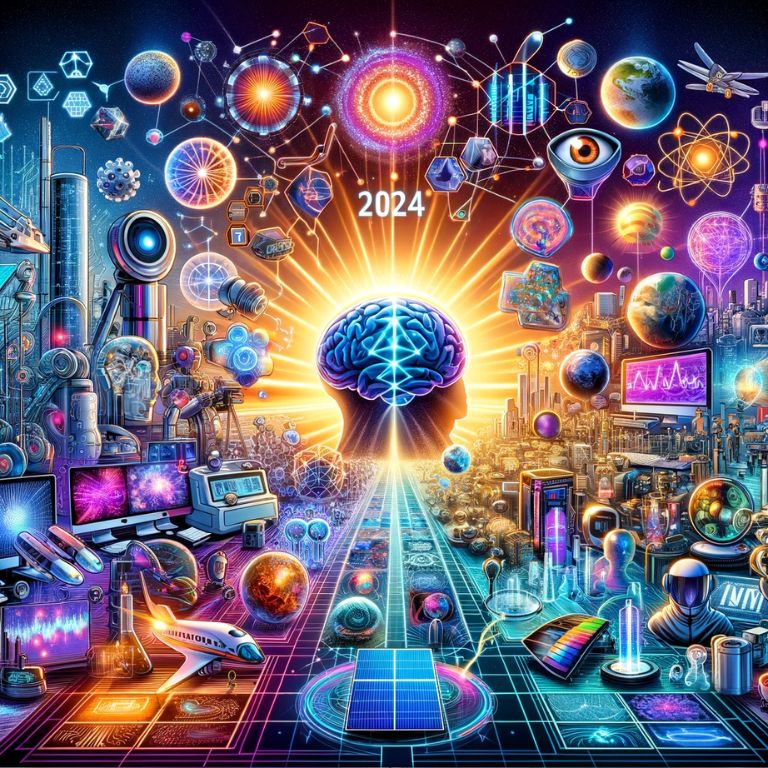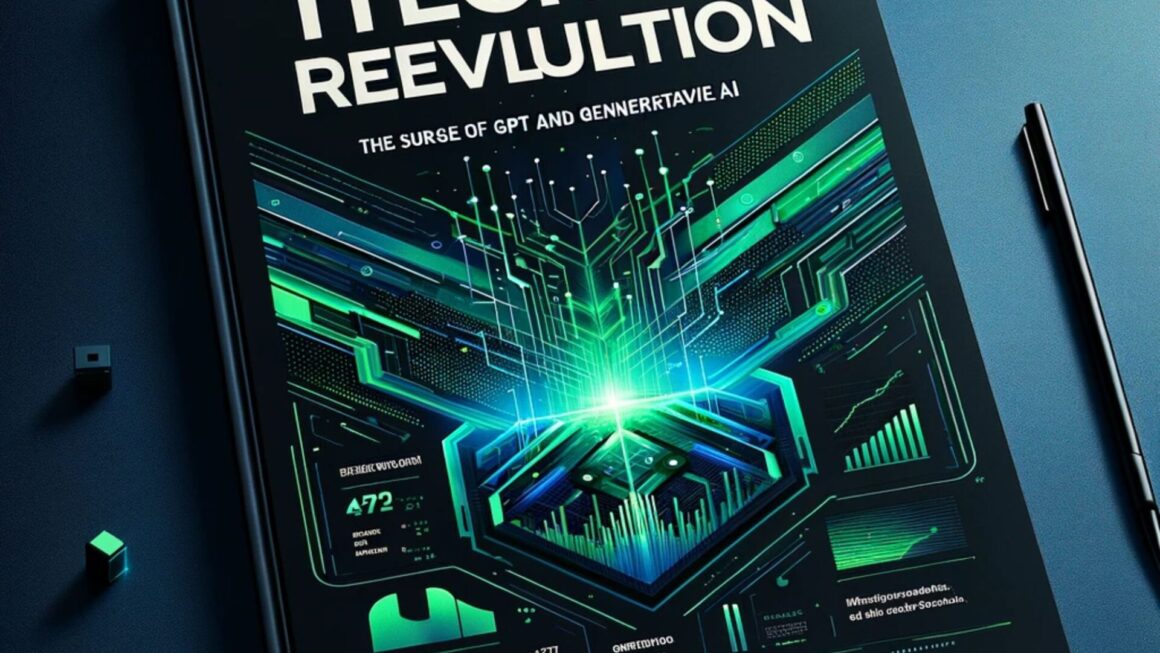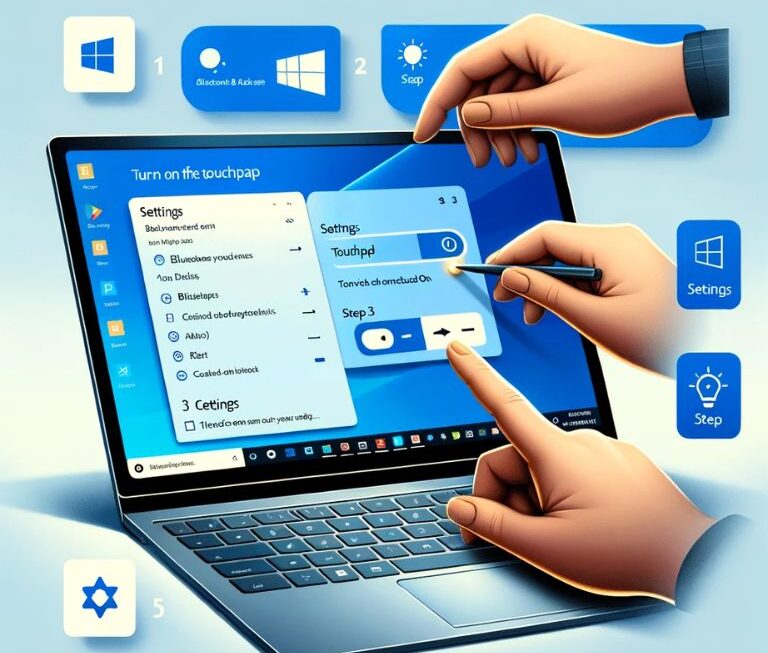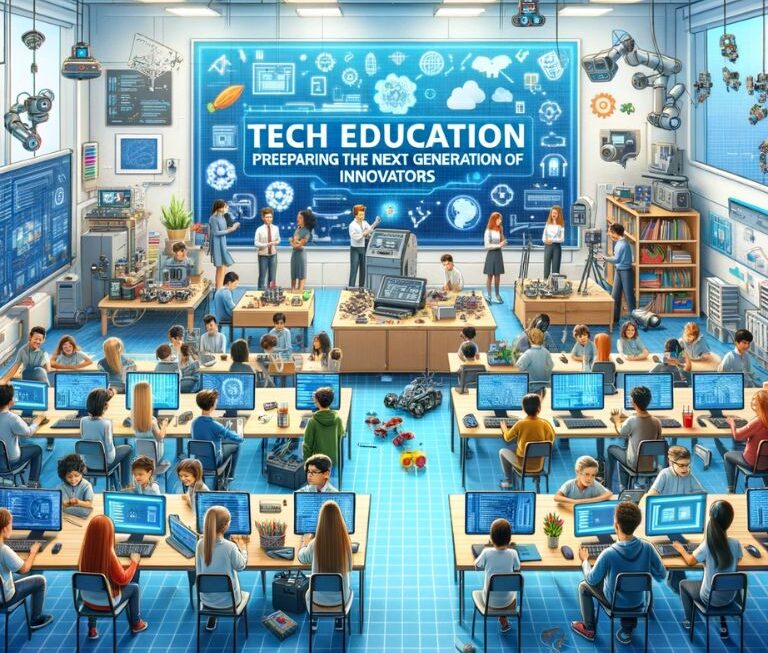As we enter 2024, the technology landscape is characterized by transformative advancements. This year marks a significant evolution in how technology integrates into our daily lives and business practices. Key trends include the rise of generative AI, driving automation and creative processes, and a noticeable shift towards simplifying technology for more efficient business operations. Additionally, there’s a trend towards consolidation, with businesses seeking unified, agile tech ecosystems. These developments are not just reshaping industries but also redefining the role of technology as a strategic partner in various aspects of life and work.
Key Areas of Automation Impact:
- Business Operations: Automation is streamlining routine tasks, allowing businesses to focus on strategic initiatives. This includes automated customer service, inventory management, and data analysis.
- Content Creation: Generative AI is enabling the creation of written and visual content at unprecedented speeds, enhancing creativity and efficiency in marketing and media sectors.
- Manufacturing: Advanced robotics and AI are transforming manufacturing processes, increasing precision and reducing human error, leading to higher quality products and safer work environments.
- Healthcare: From patient data management to diagnostic procedures, automation is enhancing accuracy and patient care, while freeing up healthcare professionals to focus on more complex tasks.
The Impact on the Workforce:
While automation brings efficiency, it also necessitates a shift in the workforce. There’s a growing need for professionals skilled in managing and overseeing automated systems. The demand for roles in AI, machine learning, and data analysis is increasing, providing new career opportunities and requiring a redefinition of skill sets in the modern workplace.
Simplification: Streamlining Business Operations
As we delve into 2024, simplification in technology emerges as a crucial trend. Businesses are increasingly seeking tools and platforms that offer transformative capabilities without the complexity of managing disparate systems. This trend is a response to the growing need for efficiency and agility in a fast-paced business environment.
Key Aspects of Technological Simplification:
- Integrated Software Solutions: Companies are adopting comprehensive software platforms that combine multiple functionalities, reducing the need to juggle between different applications.
- User-Friendly Interfaces: There is a significant focus on developing interfaces that are intuitive and easy to use, enabling a broader range of users to leverage technology effectively.
- Automated Workflows: Simplification also comes in the form of automated workflows, where routine tasks are streamlined, allowing teams to focus on high-value activities.
- Cloud-Based Services: The shift to cloud computing is simplifying IT infrastructure, providing scalable and flexible solutions that can be customized to meet diverse business needs.
Implications for Business Efficiency:
- Reduced Operational Complexity: Simplified tech solutions are minimizing the time and resources spent on managing and integrating various systems.
- Enhanced Productivity: Employees can focus more on strategic tasks, as simplified tools handle repetitive and time-consuming activities.
- Improved Decision Making: With integrated and user-friendly tools, businesses can access and analyze data more efficiently, leading to better-informed decisions.
In 2024, the pursuit of simplification in technology is not just about ease of use; it’s about empowering businesses to be more responsive and adaptive in a dynamic market landscape. This trend is setting a new standard for how technology is designed and implemented, making it more accessible and effective for businesses of all sizes.
Consolidation: The Drive for Unified Tech Ecosystems

In 2024, the technological landscape is increasingly leaning towards consolidation. This trend reflects the strategic move by businesses to integrate and streamline their technological infrastructure, optimizing both performance and cost.
The Dynamics of Tech Consolidation:
- Tech Stack Rationalization: Companies are actively reducing the number of disparate systems they use, focusing on solutions that offer multiple functions within a single platform.
- Optimized Investment: With consolidation, businesses aim to allocate resources more effectively, investing in technologies that offer the greatest return on investment (ROI).
- Enhanced Data Management: By consolidating data sources and systems, companies can achieve more cohesive and comprehensive data analytics, leading to better business insights.
- Streamlined IT Operations: Consolidation simplifies IT management, making systems easier to monitor, maintain, and secure.
Impact on Business Dynamics:
- Increased Efficiency: Unified systems reduce redundancies and improve workflow efficiency.
- Cost Savings: Consolidation often leads to significant cost reductions in both the short and long term.
- Agility and Scalability: A consolidated tech stack makes it easier for businesses to adapt to market changes and scale operations as needed.
Sector-Specific Trends: HR, Office, and Finance
The technological landscape in 2024 is significantly impacting sector-specific trends, particularly in HR, office management, and finance, with a focus on enhancing efficiency and optimizing operations through technological innovations.
Revolutionizing HR Technologies
In the realm of HR Technologies, automated payroll and recruitment processes are transforming administrative workflows, while AI-powered employee engagement tools are personalizing and improving employee experiences.
Innovations in Office Management
Office Management sees a leap forward with AI-driven office suites enhancing productivity and Smart Office Technologies utilizing IoT for efficient space and energy management.
Financial Technology Developments
In finance, automated Accounts Payable (AP) Systems are streamlining invoice processing, and AI is increasingly used in Financial Analysis for predictive insights and risk assessment.
Transformations in Sales and Marketing Technologies
In 2024, the landscape of sales and marketing technologies is undergoing transformative changes, driven by advancements in automation and AI, significantly altering the way businesses approach these critical functions.
Sales Tech Evolution
Sales technology is experiencing a significant shift with the merging of various features, creating more comprehensive and efficient platforms for sales execution and revenue intelligence.
Marketing Automation Advances
The marketing sector is embracing automation, particularly in event management, streamlining operations and offering a choice between specialized solutions and all-encompassing platforms.
Impact on SMBs with Generative AI
SMBs are particularly benefiting from generative AI, especially in customer service, leading to faster ROI compared to larger companies.
These developments in sales and marketing technologies signify a move towards more personalized, efficient, and data-driven business strategies, reshaping the landscape in 2024.
Advancements in IT, Security, and Development
In 2024, advancements in IT, security, and development are shaping a new landscape, characterized by strategic consolidations and a focus on integrating human insights with technological innovations.
Optimization of Security Investments
Economic pressures and advanced threat tactics are compelling businesses to optimize their security investments, focusing on efficient and effective cybersecurity strategies.
Simplification in Software Development
The software development sector is witnessing a trend towards simplification, with a growing adoption of web framework tools aimed at streamlining the development process.
Human-Centric Approach in Security
A notable shift in security solutions is the emphasis on human behavior, moving beyond reliance on AI to incorporate human insights for more comprehensive cybersecurity.
These advancements in IT, security, and development represent the industry’s adaptation to new challenges and the movement towards more efficient, simplified, and human-integrated technological approaches.
Data, Analytics, and AI Development Trends

As we progress through 2024, the realms of data, analytics, and AI development are undergoing significant transformations, driven by a deeper understanding of AI’s practical applications and limitations.
Discerning AI Utilization in Software
The trend of integrating AI into software solutions is becoming more discerning. Software vendors are evaluating the real-world impact of AI integrations, leading to a shift where less effective AI applications are being discarded in favor of those that offer tangible benefits. This natural selection process is ensuring that AI solutions provide genuine value, rather than just being a technological novelty.
The Varied Pace of Generative AI Adoption
The adoption of Generative AI (GAI) is varied, particularly across different sizes of businesses. While GAI is being embraced for content creation, its application in complex operations like manufacturing or supply chain management remains limited. Interestingly, larger enterprises are adopting GAI at a slower pace compared to smaller businesses. This differential adoption rate highlights the varying needs and capabilities of businesses when it comes to implementing new technologies like GAI.
AI’s Increasing Role in Software Development
AI’s integration into software development is becoming more formalized. Beyond using AI tools for specific tasks, development teams are embedding AI into the very fabric of the software development process. This trend signifies a shift towards AI-driven development methodologies, where AI is not just a tool but an integral part of how software is conceptualized, developed, and refined.
These trends in data, analytics, and AI development are indicative of a more mature and strategic approach to AI in the business sector. They reflect the industry’s growing recognition of AI’s potential and its limitations, steering towards a future where AI is leveraged more effectively and purposefully. This evolution is not just technical but also conceptual, as businesses and developers alike recalibrate their understanding and application of AI in their operations.
Collaboration and Design
The year 2024 is seeing a significant evolution in the realms of collaboration and design, with technologies adapting to the needs of a hybrid work environment and the increasing complexity of design tasks.
Enhancing Collaboration in Hybrid Work Environments
With hybrid work becoming the norm, the focus is on technologies that enhance collaboration between remote and in-office teams. Automation between applications is playing a key role in this, reducing low-value work and addressing challenges related to the proliferation of apps. This automation is not just about convenience; it’s about ensuring seamless collaboration and communication regardless of physical location.
Advances in Digital Experience Platforms (DXP)
Digital Experience Platforms are expanding their functionalities, particularly in terms of third-party integrations. Rather than focusing solely on consolidation, DXPs are aiming to offer a broader range of services and integrations, making them more versatile and adaptable to different business needs.
Integration of CAD Software with CPQ Solutions
A notable trend in the design sector is the integration of Computer-Aided Design (CAD) software with Configure, Price, Quote (CPQ) solutions. This integration is automating the creation of CAD drawings based on customer specifications, significantly streamlining the design process. This not only enhances efficiency but also allows for greater customization in product design, meeting the growing demand for personalized products.
Verticals and Services
In 2024, specific verticals and services are experiencing transformative impacts due to the integration of advanced technologies, particularly AI. This integration is reshaping how different industries approach personalization, education, healthcare, and ecosystem services.
AI-Driven Personalization in E-commerce
The e-commerce sector is seeing a surge in AI-powered personalization, or hyper-personalization, outpacing traditional methods. Software vendors are actively incorporating AI into personalization software, unlocking significant growth potential for brands and retailers. This trend is enhancing customer experiences by delivering more tailored and relevant content and product recommendations.
Generative AI in Education
The educational sector is witnessing an uptick in the use of generative AI. Particularly in the AMER region, educational institutions are leveraging AI for various applications, including personalized learning and content creation. This adoption signifies a shift towards more tech-integrated and customized educational experiences.
AI-Powered Solutions in Healthcare
Healthcare organizations investing in AI-powered solutions are seeing improved ROI. The integration of AI in healthcare is streamlining processes, enhancing patient care, and aiding in research and diagnostic accuracy. This trend reflects the increasing reliance on technology to address complex healthcare challenges.
Preferences in B2B Software Selection
In the B2B sector, there’s a noticeable trend of prioritizing breadth over depth when selecting ecosystem service providers. Businesses are looking for versatile and comprehensive solutions that can cater to a broad range of needs.
Conclusion
The technological landscape of 2024 is marked by transformative trends such as automation, AI integration, and the simplification and consolidation of tech ecosystems. These advancements are reshaping industries and redefining the role of technology in our lives. As we look ahead, these trends are expected to continue driving innovation and growth, indicating a future where technology’s influence on business and daily life becomes even more significant and transformative.




